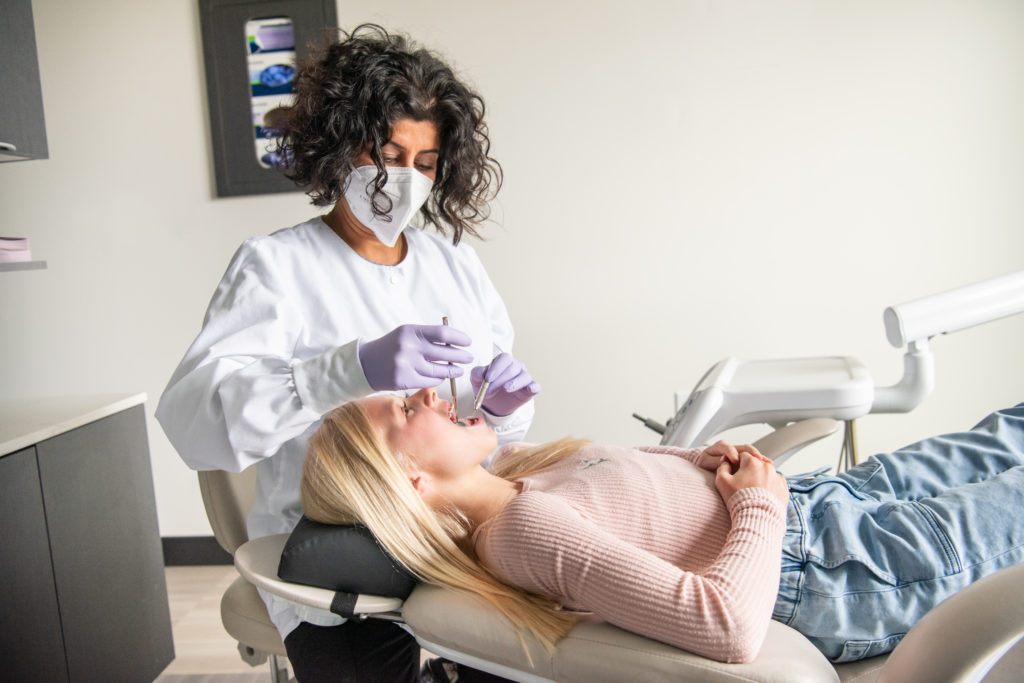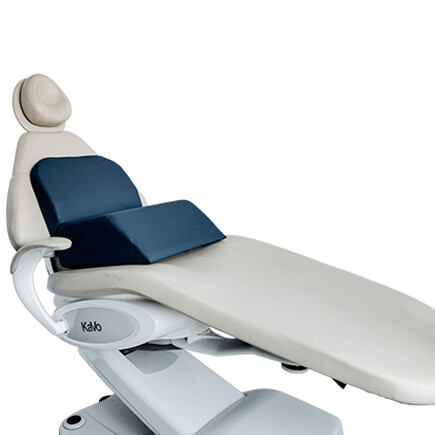Optimal Positioning for Dental Patients

When it comes to treating dental patients, positioning is everything. It not only determines whether the patient is comfortable, proper patient positioning also allows dentists and hygienists greater access to treatment areas with significantly less effort. This enables you, the dental operator, to work without discomfort and lower the chances of musculoskeletal issues from occurring.
Is there a right way to position dental patients? The short answer is yes, and each body part can be positioned optimally to allow for greater access and comfort, both for dentists/hygienists and patients.
Proper Dental Patient Head Positioning
The positioning of a dental patient’s head is arguably the most important part of treatment. A patient’s neck is particularly susceptible to discomfort; improper positioning will lead to them not being able to hold the position for long periods of time. However, in order to achieve optimal access to the patient’s mouth, their head must be positioned in a way that is not normal.
The key is to find an angle of the head that is both comfortable for patients while allowing the greatest amount of access to treatment areas. According to medical research, the optimal position for a patient’s head—that allows for the best ergonomic working posture when working behind the upper arch—is to have the occlusal plane of the upper arch at 20-25 degrees behind the vertical. This requires the head to be significantly tilted backwards, which can be uncomfortable for most patients. In order to alleviate this discomfort, dental chair headrests should be used to support the patient’s neck and gently guide their head backwards.
Proper Dental Patient Hip and Back Positioning
The hips and back of patients, especially the elderly, can cause them to become uncomfortable during treatment. Some patients are not used to lying down in these positions for extended periods of time, and even modern dental chairs are not well equipped to alleviate this discomfort.
The problem lies within the back support, or lack thereof, of dental chairs. Because of the design of dental chairs, there is usually a significant gap between the patient’s back and the chair. This gap means that patients have to partially support themselves while in the chair because they are unable to fully relax. That is why dental backrests have become a popular dental chair accessory. These memory foam pads fill the void left between the patient and dental chair, allowing them to relax while lying down.
Proper Dental Patient Leg Positioning
The problem with positioning a patient’s legs while seated in a dental chair is similar to that of their back. There isn’t ample support. Lying with your legs straight is not the most comfortable position. Ergonomics experts maintain that the most comfortable position is to have the patient’s legs slightly bent at the knees, but dental chairs don’t allow for this. Patients instead have to manually keep their knees bent without any support. That is why knee support pillows are used in dental clinics. These pads allow patients to maintain a comfortable seating position, with knees bent, without having to strain to keep themselves upright and in the most optimal treatment position.
All these dental chair accessories and more are available at the Crescent Products store. Shop today to find everything you need to keep your patients comfortable while you treat.
